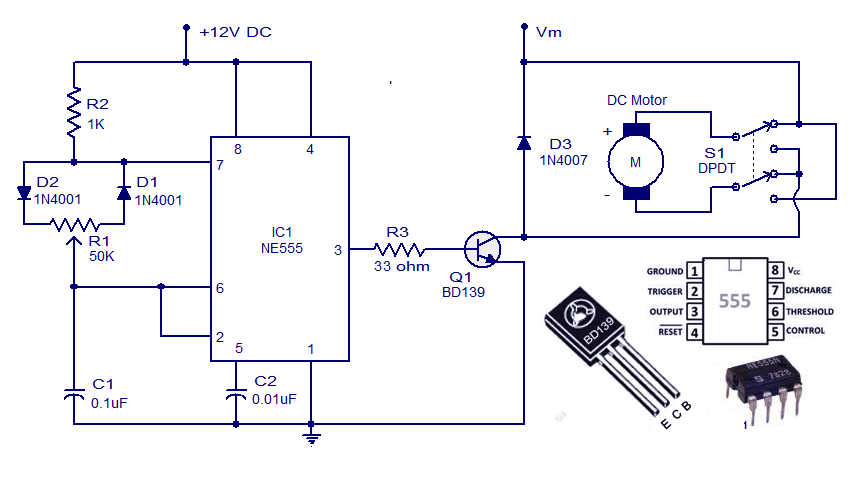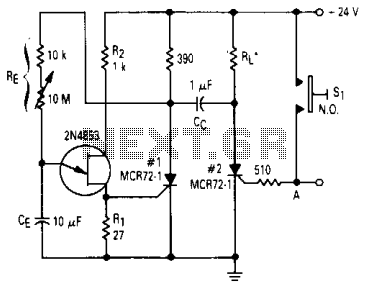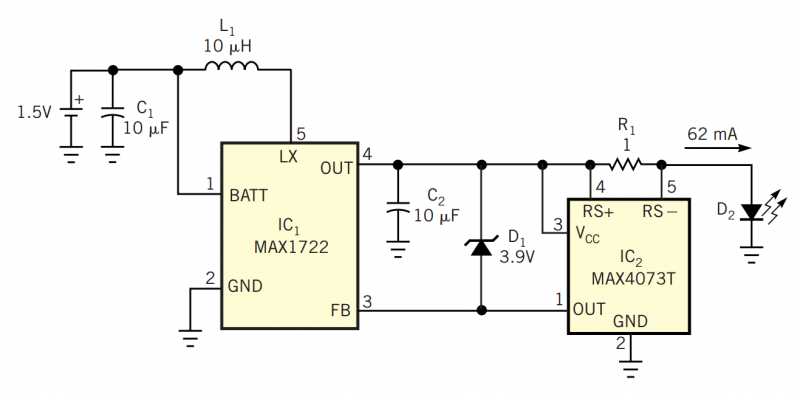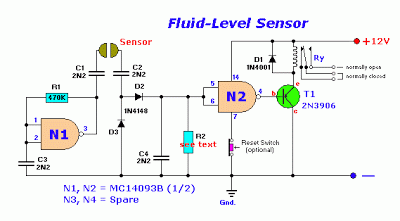
Battery Indicator Circuit For The Caravan
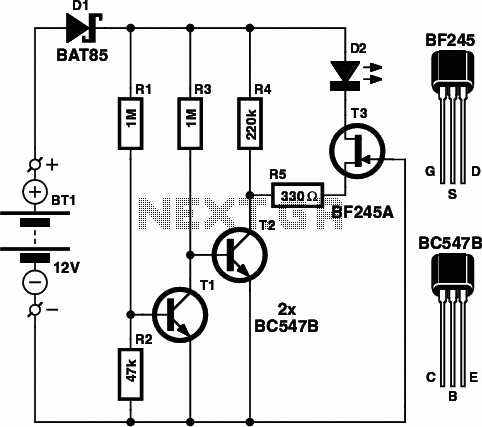
Battery Indicator Circuit for the Caravan. This i-TRIXX circuit can prevent a lot of trouble for those who go on holiday in a caravan. It would be a significant damper on your holiday spirit when you are unprepared.
The Battery Indicator Circuit is designed to monitor the voltage levels of a caravan’s battery, providing real-time feedback on the battery's state of charge. This circuit is essential for ensuring that the battery remains within optimal operating conditions, thus preventing situations where the battery is overly discharged, which can lead to failure or reduced lifespan.
The circuit typically employs a microcontroller or a simple voltage divider to measure the battery voltage. An LED indicator is commonly used to signal the battery's status. For example, a green LED might indicate that the battery is fully charged, a yellow LED could signify a moderate charge level, and a red LED would alert the user to a low charge condition.
To implement this circuit, the following components are generally required: a voltage regulator to ensure stable operation, resistors to create the voltage divider, LEDs for visual indicators, and a microcontroller for processing the voltage readings. The circuit can be powered directly from the caravan's battery, ensuring that it operates even when the vehicle is not in use.
In addition to visual indicators, the circuit can be enhanced with audible alarms that activate when the battery voltage drops below a certain threshold. This feature provides an additional layer of safety, alerting the user to take action before the battery becomes critically low.
Overall, the Battery Indicator Circuit serves as a vital tool for caravan owners, enhancing the reliability of the electrical system and contributing to a more enjoyable holiday experience by preventing unexpected battery failures.Battery Indicator Circuit For The Caravan Circuit This i-TRIXX circuit can prevent a whole lot of trouble for those of you who go on holiday in a caravan. It would be a significant damper on your holiday spirit when you are read.. 🔗 External reference
The Battery Indicator Circuit is designed to monitor the voltage levels of a caravan’s battery, providing real-time feedback on the battery's state of charge. This circuit is essential for ensuring that the battery remains within optimal operating conditions, thus preventing situations where the battery is overly discharged, which can lead to failure or reduced lifespan.
The circuit typically employs a microcontroller or a simple voltage divider to measure the battery voltage. An LED indicator is commonly used to signal the battery's status. For example, a green LED might indicate that the battery is fully charged, a yellow LED could signify a moderate charge level, and a red LED would alert the user to a low charge condition.
To implement this circuit, the following components are generally required: a voltage regulator to ensure stable operation, resistors to create the voltage divider, LEDs for visual indicators, and a microcontroller for processing the voltage readings. The circuit can be powered directly from the caravan's battery, ensuring that it operates even when the vehicle is not in use.
In addition to visual indicators, the circuit can be enhanced with audible alarms that activate when the battery voltage drops below a certain threshold. This feature provides an additional layer of safety, alerting the user to take action before the battery becomes critically low.
Overall, the Battery Indicator Circuit serves as a vital tool for caravan owners, enhancing the reliability of the electrical system and contributing to a more enjoyable holiday experience by preventing unexpected battery failures.Battery Indicator Circuit For The Caravan Circuit This i-TRIXX circuit can prevent a whole lot of trouble for those of you who go on holiday in a caravan. It would be a significant damper on your holiday spirit when you are read.. 🔗 External reference
